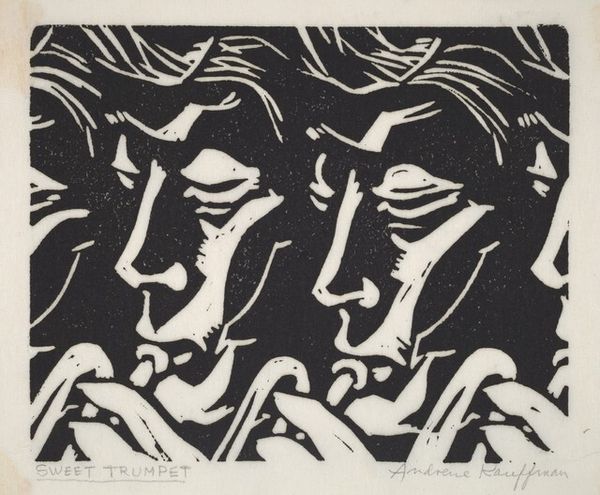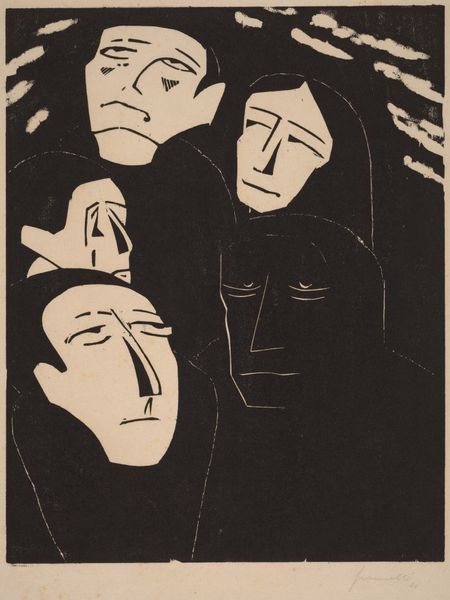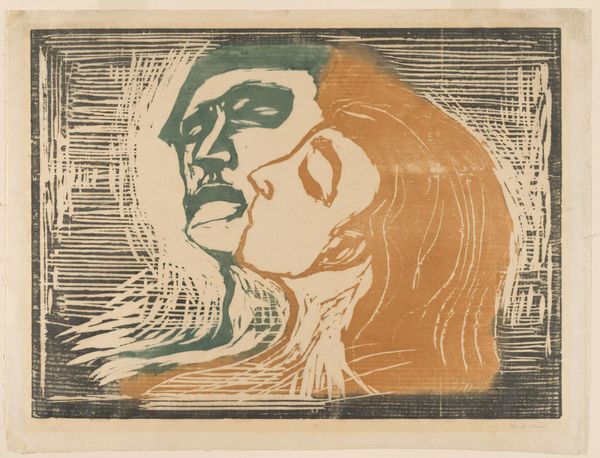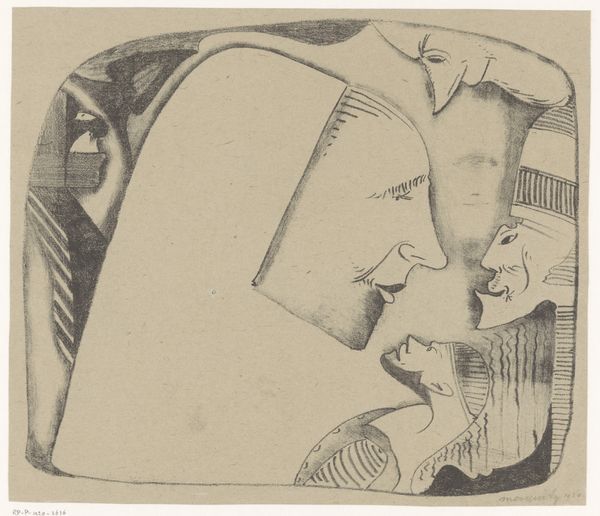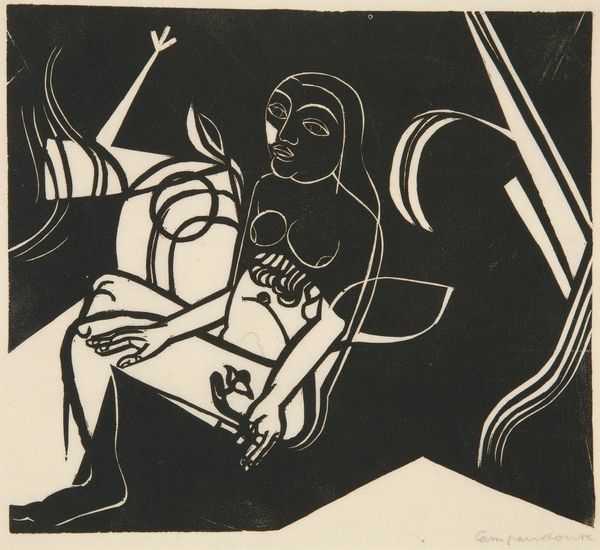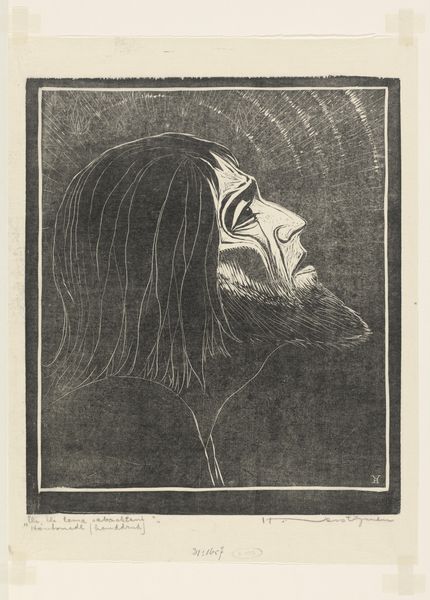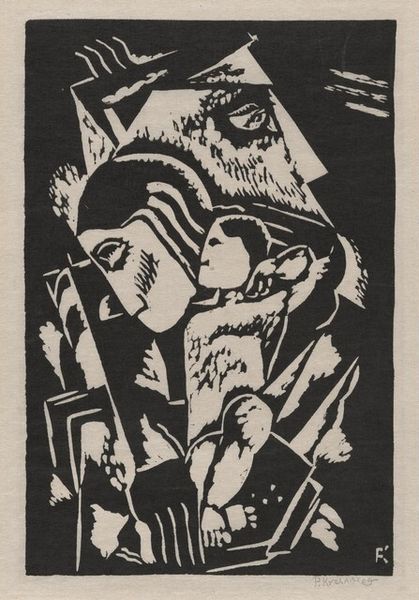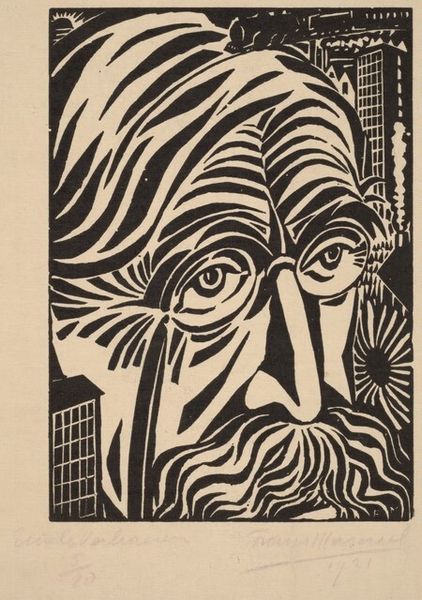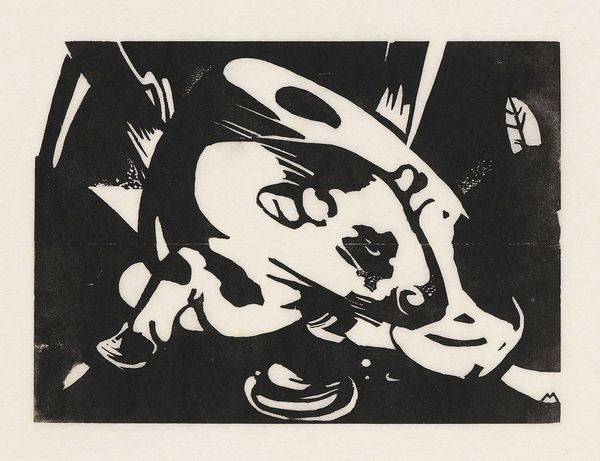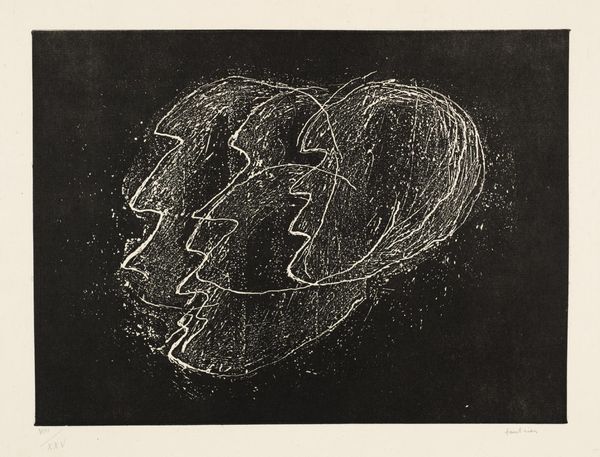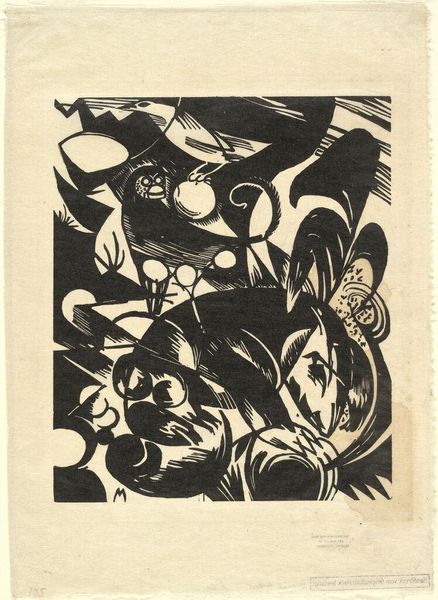
Fantasie: twee mannenkoppen in profiel naar links, links een profiel in tegengestelde richting 1918
0:00
0:00
samueljessurundemesquita
Rijksmuseum
drawing, print, woodcut, graphite
#
portrait
#
drawing
# print
#
caricature
#
caricature
#
figuration
#
expressionism
#
woodcut
#
graphite
Dimensions: height 120 mm, width 250 mm
Copyright: Rijks Museum: Open Domain
Editor: This is *Fantasie: twee mannenkoppen in profiel naar links, links een profiel in tegengestelde richting,* or *Fantasy: two male heads in profile to the left, left a profile in opposite direction*, created in 1918 by Samuel Jessurun de Mesquita. It is currently at the Rijksmuseum. It's a drawing and a print, woodcut on graphite if I am correct, right? It is striking! The extreme contrast and caricature-like features give it an unsettling quality. How do you interpret this work? Curator: The high contrast achieved through the woodcut technique enhances the expressive nature of the work, tying into the broader context of Expressionism at the time. The distortions, the caricatured faces… This isn't just about depicting individuals. Consider the social climate in 1918: World War I was ending. Do you see these stark contrasts and almost grotesque features as a reflection of societal anxieties, perhaps a commentary on the dehumanizing effects of war and the perceived corruption of authority? Editor: That's an interesting perspective! I hadn't connected it to the war directly, but I see how the distorted features could represent a society that felt distorted by the war and societal imbalance of the time. Almost like a dark mirror reflecting anxieties and loss. Curator: Exactly. And the public display of such images serves as a form of social critique, does it not? The gallery and then museum setting elevates what might have been perceived as mere caricatures to the realm of political and cultural commentary. It validates that anxiety while preserving its artifacts. Editor: I never thought about woodcuts like this before; a validated artifact. Thank you. This gives me a new perspective on how art interacts with its social surroundings and institutions. Curator: And it makes us question how museums actively give meaning. Always consider the context.
Comments
No comments
Be the first to comment and join the conversation on the ultimate creative platform.
